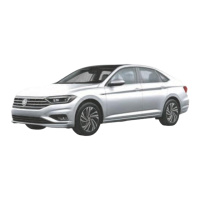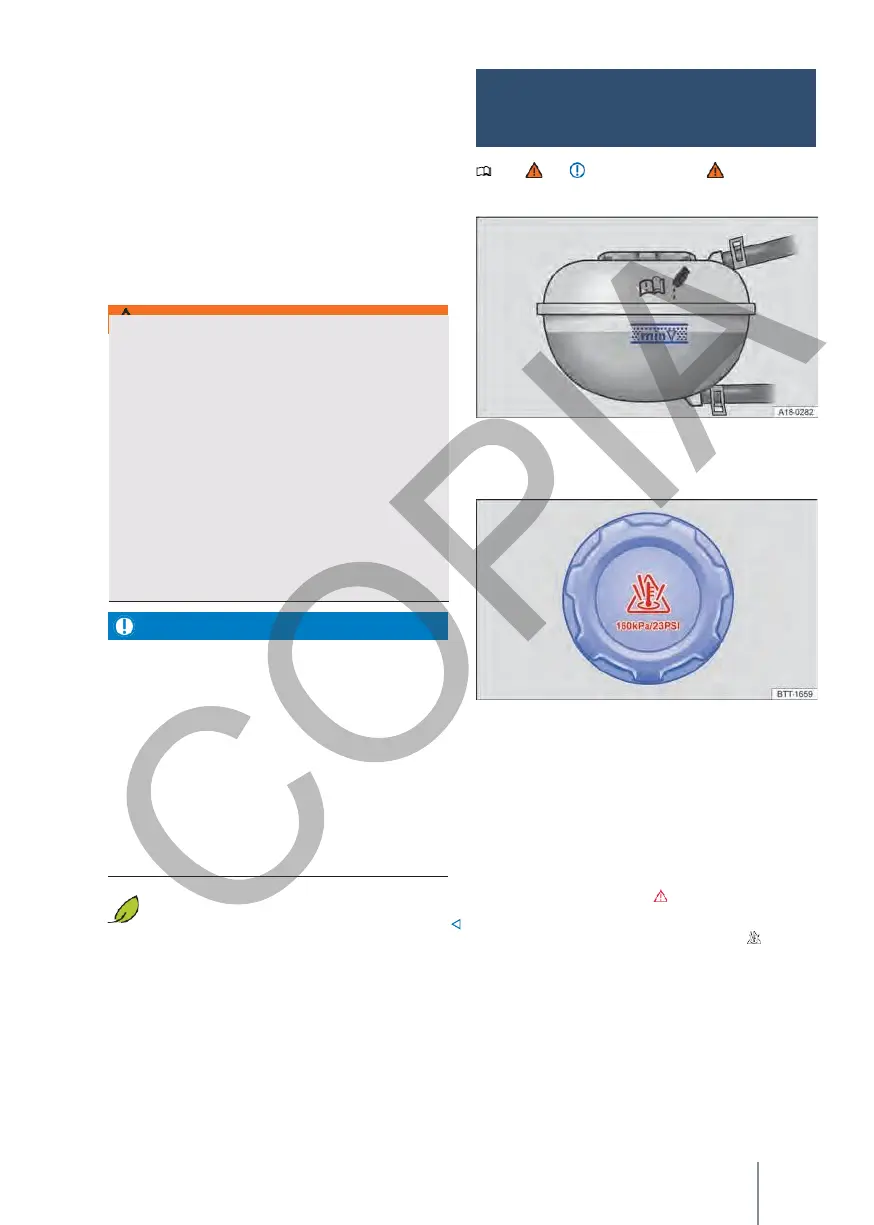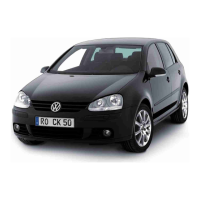This additive is recognisable by its lilac colouring.
This mixture of water and additive not only
provides anti-freeze protection down to -25 °C (-
13 °F), but also protects the light alloy parts of the
cooling system against corrosion, prevents
limescale build-up and considerably increases the
boiling point of the coolant.
When replenishing the coolant,
use a mixture of
distilled water
and at least
40 % of the appropriate
coolant additive for optimum corrosion protection
→ page 249.
Never mix original coolant additives with engine
coolants that have not been approved by
Volkswagen.
•
If the liquid in the expansion tank does not have
a pink colouring (resulting from the mixing of
the addi-
If the coolant is lilac with distilled water), but is
brown, for example, then the correct coolant has
been mixed with an unsuitable coolant. If this is
the case, the coolant must be changed
immediately, otherwise serious malfunctions or
damage to the engine and system could occur.
refrigeration!
Engine coolant and its additives can pollute
the environment. If
If any operating fluid comes out, collect it and
dispose of it properly and in an environmentally
sound manner.
Note and , on page 240, and
, at the
beginning of this chapter, on page 248.
Fig. 175 On the engine compartment: markings on
the engine coolant expansion tank (schematic
representation).
Fig. 176 In the engine compartment: Engine coolant
expansion tank cap (schematic representation).
When the engine coolant level is too low, the
coolant warning light comes on.
Previous
steps
1.
Park the vehicle on a firm horizontal surface.
2.
Wait for the engine to cool down → page 250.
3.
Open the front bonnet
→ p. 242.
4.
The engine coolant expansion tank can be
recognised by the symbol on the cover → fig.
176.
Check the coolant level of the
engine.
When the vehicle is handed over
(new vehicles)
, the
coolant may be above the maximum coolant level.
Check the engine coolant level and
replenish
engine coolant
If the engine cooling system does not have
sufficient anti-freeze protection, the engine could
fail and serious injury could result.
•
Make sure that the percentage of coolant
additive is correct taking into account the
lowest ambient temperature pre-heating.
The vehicle shall be installed at the place
where the vehicle is to be used .
•
When the outside temperature is extremely
low, the coolant may freeze and the vehicle
may become immobilised.
The heating would not work either, so
insufficiently warm occupants could freeze to
death. As the heating would not work in this
case either, insufficiently warm occupants could
freeze to death.

